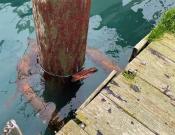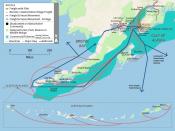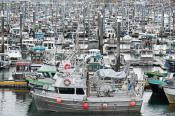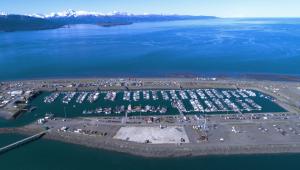-
About Homer
-
- Americans with Disabilities Act Compliance Program City CampgroundsCommunity Recreation COVID-19 Hickerson Memorial Cemetery
- Library Parks & Trails Public Safety Fire Police Emergency Information
- Events & Activities City Calendar Library Calendar Recreation Calendar Doing Business in Homer Sister City Program Coast Guard City
-
- Departments
-
Government
-
- Office of the Mayor City Council City Clerk's Office Committees & Task Forces
- Commissions & Boards ADA Advisory Board Economic Development Advisory Commission Library Advisory Board Parks, Art, Recreation & Culture Advisory Commission Planning Commission Port & Harbor Advisory Commission
- Homer City Code Public Meetings Agendas & Minutes Invitations to Bid & RFPs
-
- How Do I?
Homer Harbor Critical Float System Replacement Project
This project completes design, engineering and permitting and replaces two Float Systems in Homer Harbor: Float System 1 and 4. These float systems and adjoining gangways were constructed by the State of Alaska in 1964 as part of the original harbor and transferred to City ownership in 1999 with extensive deferred maintenance. Despite having completed major upgrades to harbor assets in the past ten years and increased maintenance expenditures, the City has been unable to keep pace with infrastructure deterioration.

Major maintenance (added flotation to the main and stall floats and replacing timber piles and decking) has allowed continued use of these floats. But at over double their engineered life expectancy, the systems exhibit critical loss of structural capacity. A Harbor Condition Survey in 2022 confirmed that the Systems are in critical condition, non-compliant with design, fire protection and safety standards and will soon face load restrictions or decommissioning.

Homer's Port and Harbor is a major regional freight transportation and commercial activity center. In total, the main float systems accommodate 920 stalls for reserved vessels and 4,100 linear feet of transient moorage for vessels up to 75 feet long, with a stall waiting list of over 400 vessels. The harbor also offers a five-lane boat launch ramp, a barge loading area/ramp, vessel repair areas, two fuel floats and a commercial fish dock with an ice plant and cranes to transfer commercial fish and other cargo.
It is a port of refuge for vessels transiting the Gulf of Alaska and Kennedy Entrance, and a critical link in the marine transportation network on which vital industries, the Port of Alaska, and over 47 non-road connected villages and work sites in southcentral and western Alaska depend.
- Ninety-two vessels provide freight shipping. For example:
- one water taxi operating out of System 1 delivers on average 125 tons of freight to Kachemak Bay communities monthly during the summer and 80 tons each month the rest of the year;
- a local building materials supplier sends an estimated 1M pounds of construction materials to roadless communities in Central and Western Alaska each year.
- Two vessels provide 480 piloted cargo and tanker trips into the Don Young Port of Alaska annually;
- Commercial fishing vessels home porting, repairing, provisioning, and delivering in Homer participate in Bering Sea crab, Pacific halibut, Bristol Bay salmon, and other fisheries of national and international significance. Homer ranked as the 78th fishing port in the U.S. by weight and 65th by value, with landings of 4.7M pounds of seafood worth $12.5M in 2020.
- Deliveries from the Homer Port also support Bristol Bay economic activity. In 2022, 4M tons of cargo, 300,000 gallons of fuel, and 350 vessel transports via 25 landing craft originated in Homer Port for delivery to Bristol Bay via Williamsport and Iliamna Portage Road, which significantly reduces the journey between Cook Inlet and the Bristol Bay fishing grounds and between Homer and rural Western Alaska and Aleutian Chain villages.

Decommissioning will displace vessels and create hardship for regional transportation networks that depend on safe and efficient operations at Homer Harbor, including the Seldovia Fast Ferry Kachemak Explorer for passenger and freight loading, remote communities in southcentral and western Alaska and the commercial fishing fleet.

The Harbor is operating at or above capacity. Demand for moorage and regional freight movement has increased such that the harbor already cannot meet load bearing and system demands. The loss of floats in Systems 1 and 4 will have a ripple effect, slow the entire Port operations, and contribute to delayed shipments. System-wide closure would affect 336 vessels for System 1 and 167 vessels for System 4, over half the stall capacity in the harbor. Closing even one finger on a float, either for additional repairs or permanently, means that affected vessels have to raft, hot-berth, move to transient moorage, or most likely be displaced entirely from the facility.
Decommissioning an entire float system increases vessel congestion and operational delays related to rafting and tidal draft constraints, cost the harbor and vessel operators time and fuel, and cause life and safety concerns. A sudden float system failure that causes vessel damage would likely cost a fisherman an entire season, incapacitate numerous vessels, slow and disrupt freight delivery schedules, or block access to critical floats and services.



